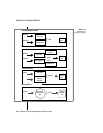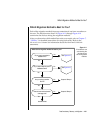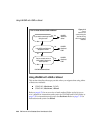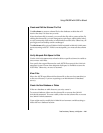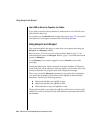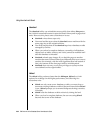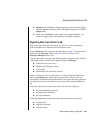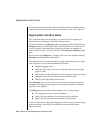
Data Consistency, Recovery, and Migration 4-63
Using tbunload and tbload
The .sql file does not contain all table information available from the existing
database. You can modify the .sql file to add the following information:
■ Initial and next extent values for a table (the default value of eight
pages is used)
■ Lock mode for a table (the default value of page-level locking is used)
■ Dbspace where a table should reside
■ Blobspace where a blob column should reside
If you export a database that stores blobs in a blobspace, you must edit the
.sql file to include the blobspace name in the CREATE TABLE statement.
Run dbimport when you are ready to re-create and populate the exported
databases. (During the import, page-level locking is used unless otherwise
specified in the .sql file.)
The dbimport command-line options enable you to do these things:
■ Turn logging on for the imported database.
■ Specify the new database to be created as ANSI-compliant.
■ Specify the dbspace where the database is to be created.
Using tbunload and tbload
This section describes how you migrate data using the tbunload and tbload
utilities.
Refer to page 4-53 for an overview of this method. Refer to page 7-107 for
instructions and syntax for tbunload. Refer to page 7-47 for instructions and
syntax for tbload.
To run tbunload or tbload, you must be logged in as user informix or have
DBA privileges. You must run both utilities from the current host machine.




